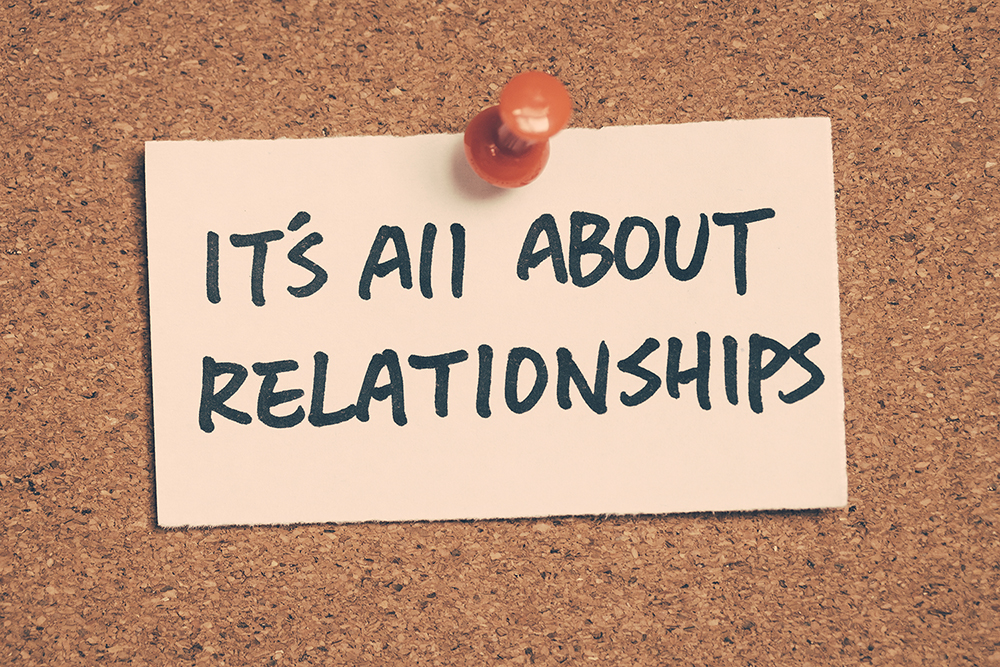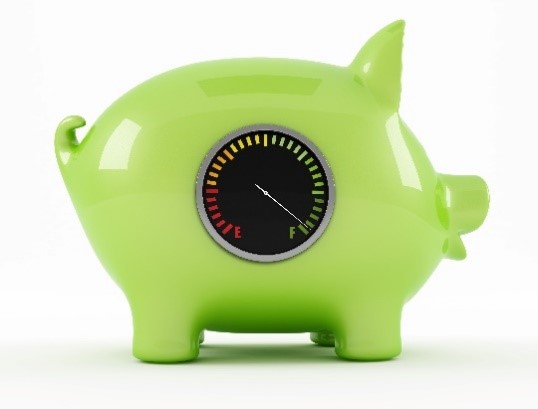Most founders start their nonprofit because they want to make a difference or solve a problem in the community. They quickly realize that knowing how to raise money is the key to fulfilling their mission.
The problem is that they don’t know much about fundraising except what they’ve seen others do.
That’s why most founders start with bake sales and spaghetti dinners to raise funds.
Unfortunately, those don’t bring in the kind of money you need to pay for supplies and overhead, much less staff.

When you have a thousand things to do like running your programs, recruiting volunteers, and spreading the word about your good cause, there’s not a lot of time left over to research fundraising strategy.
It’s no surprise that lots of new, young, and small nonprofits struggle to raise the money they need.
And you’re probably right there with them.
You’re passionate about your nonprofit’s mission (that’s why you took the leap and started the organization in the first place!). Yet if you’ve tried raising money, you’ve found that:
- Fundraisers don’t bear enough fruit. Events, raffles, and online fundraisers you’ve tried just aren’t bringing in the amount of money you need.
- Grants are hard to get. You thought you might get some grants, but you’re finding dead ends because you don’t have what foundations are looking for. Plus you don’t really know where to find great grant opportunities anyway.
- Big donations are hard to find. You’d love to find some wealthy people to give big bucks, but you don’t know anyone with that kind of money… and the thought of asking someone for money makes you want to puke.
So, what do you do?
Searching online yields a ton of free resources, but some of it is contradictory and, frankly, it’s overwhelming to figure out where to start.
It’s easy to feel confused and frustrated, not knowing what to do that will work.
I remember that feeling.
The first time I was responsible for bringing in the money my nonprofit needed to survive, it was so much pressure I could hardly breathe some days. I didn’t have the luxury of webinars, ebooks, and podcasts back then. There were few books and fewer educational opportunities.
I had to figure it out myself.
The good news is I found a way to make it work and my nonprofit not only survived but thrived as our fundraising revenue doubled then tripled then quadrupled! Yay!
The bad news is that it took me a while to test a lot of different things in my search for something that worked. I threw a LOT of spaghetti at the wall and suffered through a lot of failures. Plus, it took me a couple of years before things started to click.
I remember days that I wondered if I’d EVER figure it out.
Thankfully I was persistent and eventually I discovered a strategy that worked: the key was valuing the donor over the donation.
It’s like the goose and the golden egg story. If all you care about is the golden egg and neglect the goose, the goose will either starve or fly away, leaving you with no more golden eggs.
In practical terms, if you’re so focused on the money that you neglect your donors and their needs, they’ll soon stop giving.
Taking care of donors MUST be your priority if you want to raise all the money you need to fully fund your nonprofit’s mission. Keep the goose happy and the golden eggs will keep coming.
That’s why I call this method of raising funds ‘donor-based fundraising’ – it’s all about the donor.
Let’s look at what that really means and how to put it in place for your nonprofit.
Why you need donor-based fundraising
Imagine that you have a waiting list for your program.
It breaks your heart to think of those lives going without help. Together with your team, you decide to expand your program so you can eliminate the waiting list.
Great! Now you need the money to pay for the expansion.
You write a letter to the names on your list explaining your plans to grow the program then you sit back, waiting for the money to come flooding in.
Yeah, right.
If you’ve tried sending a letter to your list, you know it doesn’t always work — which is frustrating. You’ve got a great cause, and when people see your nonprofit in action they want to get more involved. So why won’t they give in response to your letter?
It’s all about engagement.
If people don’t feel like part of your team, they won’t give.
If they aren’t inspired by your request for money, they won’t give.
If they feel like all you do is show up with your hand out, they won’t give.
Catching on?
 Yet, if you build a big, loyal donor base of people who love your mission, send them a compelling, heart-tugging request, and nurture the relationship BEFORE you ask, you can raise all the money you need.
Yet, if you build a big, loyal donor base of people who love your mission, send them a compelling, heart-tugging request, and nurture the relationship BEFORE you ask, you can raise all the money you need.
How do I know? I’ve done it! And I’ve helped lots of clients do it too.
It takes three distinct pieces to create the kind of fundraising that will fully fund your budget. Skimp on one and it doesn’t work. You need all three in place to get the results you’re looking for.
Let’s take a close look at each piece.
1. Build a big, loyal donor base.
To raise the money you need to fully fund your annual budget, you need a large donor family full of people who give because they love the work your nonprofit does.
When you have that large donor family and you take good care of them, they’ll give often and give big.
Sounds great, right?
So, how do you build a big, loyal donor base?
You start by getting clear about the ideal donor prospect.
Who out there will want to write you a check just because you’re doing good in the world?
Who will click the ‘donate now’ button simply because they believe in your mission?
For nonprofits that are just getting started and those that are starting to build a donor base, it’s simple: start with you and the people around you and notice what you have in common.
Notice demographics (facts about sex, age, occupation, where you live, etc.). Also notice psychographics (interests, values, likes, etc.).
This is not a scientific process, but it works.
Jot down the commonalities you notice into an Ideal Donor Profile.
Then start thinking about where you can find more people who match the profile.
Don’t worry about trying to find “rich people.” Instead, focus on people who are likely to care about you and your nonprofit’s good work.
Just because someone has money doesn’t mean they give to charity and if they do give to charity, they may not give to you.
Get ready be on a constant lookout for new donors who match your Ideal Donor Profile. It’s the BEST way to find new donors for your nonprofit.
Finally, be patient with the process because it WILL take time.
Building a donor base is like building a big snowball for the base of a snowman. In the beginning, you’ll add snow a handful at a time and it grows slowly. Then once you can start rolling it through the yard, it’ll grow much faster and reach the size you want in no time.
2. Master your message.
 In order to get a donation, you need to say something that will inspire people to give.
In order to get a donation, you need to say something that will inspire people to give.
In other words, you need an inspiring message that attracts people like moths to a flame.
The right words will do exactly that.
So, what are the right words?
It’s tempting to talk about your programs and the processes you use to change lives. It’s what you know the most about and are focused on daily.
But your donors and prospects don’t care about HOW you do what you do. They don’t care about your certifications and credentials either.
What they care about is WHY you do what you do and about the lives you’re changing.
Think about the difference:
| How | Program description, certifications of staff, service area, activities of the program | For example,
“Through our accredited program, we serve 91 people in 3 counties, providing education to empower them to create self -sufficiency so they can reach their full potential.” |
| Why | Outcomes your program gets and the impact on those you serve | For example,
“Because of her participation in our program, Janice was able to complete her GED, get training as a chef, and now has her dream job in the kitchen of the nicest restaurant in town. She’s breaking the cycle of generational poverty in her family.” |
Be prepared to tell a ‘before-and-after’ story about someone you’ve helped and how your program changed their life.
Your message needs to be about how you’re making a difference in the world. Share how your nonprofit is meeting a need that no one else is addressing and why it’s important to meet that need NOW.
If you’re so new that you haven’t started running programs yet, that’s ok. Talk about what you’re planning to do and the results you intend to get, and why it matters.
Oh, and keep your message simple. Leave out the jargon, acronyms, and industry slang. Everything you share should be conversational and easy to understand, not stiff and formal language that’s hard to comprehend.
Boring, self-centered, jargony messaging turns people off. Simple, compelling messaging inspires people to give.
And that’s what you need to fully fund your budget for the year.
3. Nurture the donor relationship.
Your donor needs to trust you to give you money.
So, you need to build trust with her.

You know what I’m talking about here, right? Relationships.
Most fundraisers know they need to develop relationships with donors but can’t seem to get moving with it.
And it’s getting in their way of raising big money.
After all, it’s the donors who feel most connected with our cause who give the biggest gifts.
Seems to me that the biggest return on investment (or ROI) you can get with fundraising is to help donors feel a strong connection with your nonprofit’s work.
I see three things that are in the way of building these strong relationships. People:
- Don’t know where to start.
- Aren’t sure how to build relationships without feeling manipulative.
- Can’t seem to carve out the time to begin.
Sound familiar?
The first time I took a donor to lunch, I felt so awkward because I wasn’t sure what I was supposed to do or say, and I didn’t want to screw it up. Fortunately, I decided to just relax and have a conversation and it worked out just fine.
 Think for a minute about your best friend.
Think for a minute about your best friend.
When you first met them, you probably weren’t best friends from the get-go. It takes time and effort to get to know someone and develop a lasting relationship.
On top of that, we do it without thinking about it. We simply hang out with people we like. The more we like them, the more time we want to spend with them.
Now, get this: it isn’t that different with donor relationships. You’re just building the relationship on purpose instead of letting it grow organically.
The good news here is that you know more about growing relationships than you thought you did. Cool?
Now, here’s a way to think about it that should really help.
The relationship account
 Imagine that you have an emotional bank account with each donor.
Imagine that you have an emotional bank account with each donor.
Each time you ask for money, you’re withdrawing points from the account.
When you help your donor feel good about their decision to support your nonprofit or when you tell them a story that moves them, you’re adding points to the account.
You don’t have to be an accountant to understand that if all you do make withdrawals, it won’t take long before you’re in the hole and the account is closed.
Good fundraising is what happens BETWEEN the asks. Most nonprofits are way too focused on the money and completely ignore their donors until it’s time to ask for money again, which feels really crappy to the donor.
This is why donor retention rates are so bad right now!
Most nonprofit fundraisers are so focused on the money, they don’t think about the people who are giving the money. They’re neglecting to make deposits into the account, and donors are tired of being an ATM. So they stop giving.
The good news here is that it’s easily fixed: make more deposits than withdrawals.
I spent the day with a client recently and we mapped out her next 6 months on a giant calendar so she could see everything at a glance. We put newsletters, appeals, and all kinds of fundraising stuff on the calendar using a different colored sticky note for deposits and withdrawals.
We were able to easily see which activities were adding points to the relationship account and which ones were withdrawing points, and it became very clear how important her newsletter is to her overall fundraising. In fact, it’s her main tool for making valuable deposits into the relationship account.
If she doesn’t get that newsletter out, her donors will probably get tired of her requests for money very quickly. And if she’s going to hit her fundraising goals for the rest of the year, she can’t afford to lose any donors because they feel over-asked. So she needs to spend more time that ever before making sure her newsletter is donor-focused, consistently delivering what donors want.
You see, relationship building is all about strategy and planning. You’ll never be able to keep enough points in the relationship account if you’re always in reactive mode and making decisions at the last minute about which activities to pursue.
Planning is key!
Have you ever started out on a trip without a specific destination in mind?
Typically, when we travel, we know exactly where we’re trying to get to. And a GPS makes road trips much easier.
Raising money without a plan is like trying to drive to Key West without a map. You may eventually get there, but it’s going to be hard and take much longer than if you had help.
To raise money like the big nonprofits do, you need a plan based on your strengths that will generate the dollars you need to fully fund your budget. Otherwise, you’ll always be spinning your wheels at the last minute trying to figure out how to raise money to pay for programs and salaries.
Reactive fundraising doesn’t generate the kind of funding you need to easily pay your overhead and help you grow to the next level.
 Your plan needs to include:
Your plan needs to include:
- Finding new donors using your Ideal Donor Profile.
- Asks and communications full of compelling, interesting messaging.
- Activities for nurturing donor relationships so donors feel engaged and part of the team.
When you have a plan that’s based on strategy, you’re proactive which changes the game.
Your plan will give you time to think, time to prepare, time to get creative, and time to engage others’ help.
The Bottom Line
Every nonprofit CAN raise the money they need to fully fund their budget if they build a big, loyal donor base, inspire them with compelling messaging, and focus more on the relationship than the donation. Wrapping all these activities into a fundraising plan sets the stage for a stellar year with less stress and more fun.
And that’s a great place to be when you’re in the business of changing lives.
Additional resources
Successful Fundraiser Checklist: https://getfullyfunded.com/documents/Successful-Fundraiser-Checklist.pdf
The A to Z Guide to Understanding Your Donor: https://getfullyfunded.com/documents/Guide-to-Understanding-Your-Donor.pdf
The 1-Page, Quick-and-Simple Fundraising Plan: https://getfullyfunded.com/plan






Leave A Comment